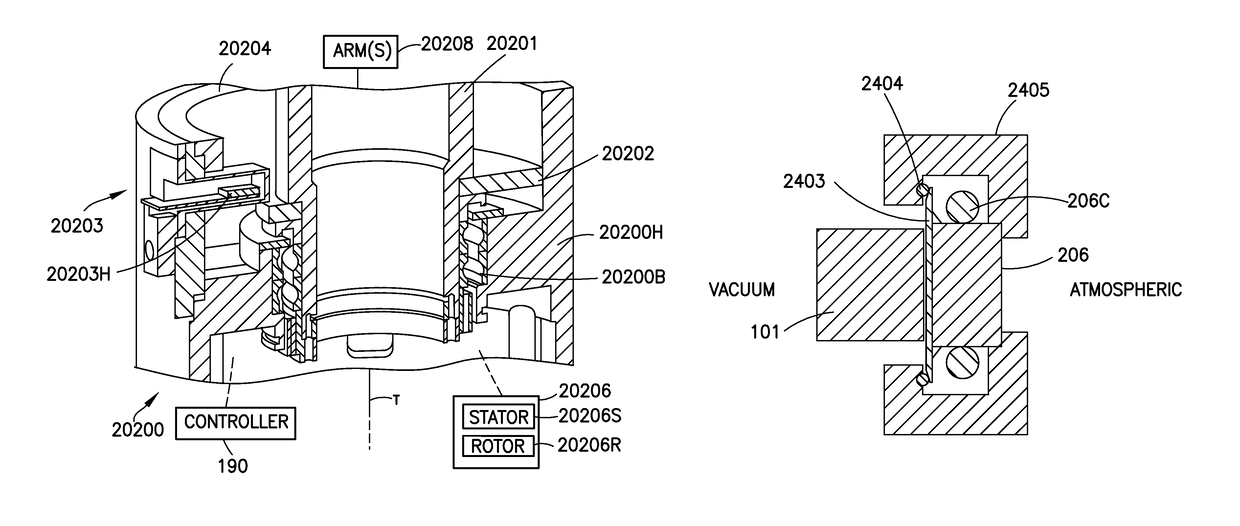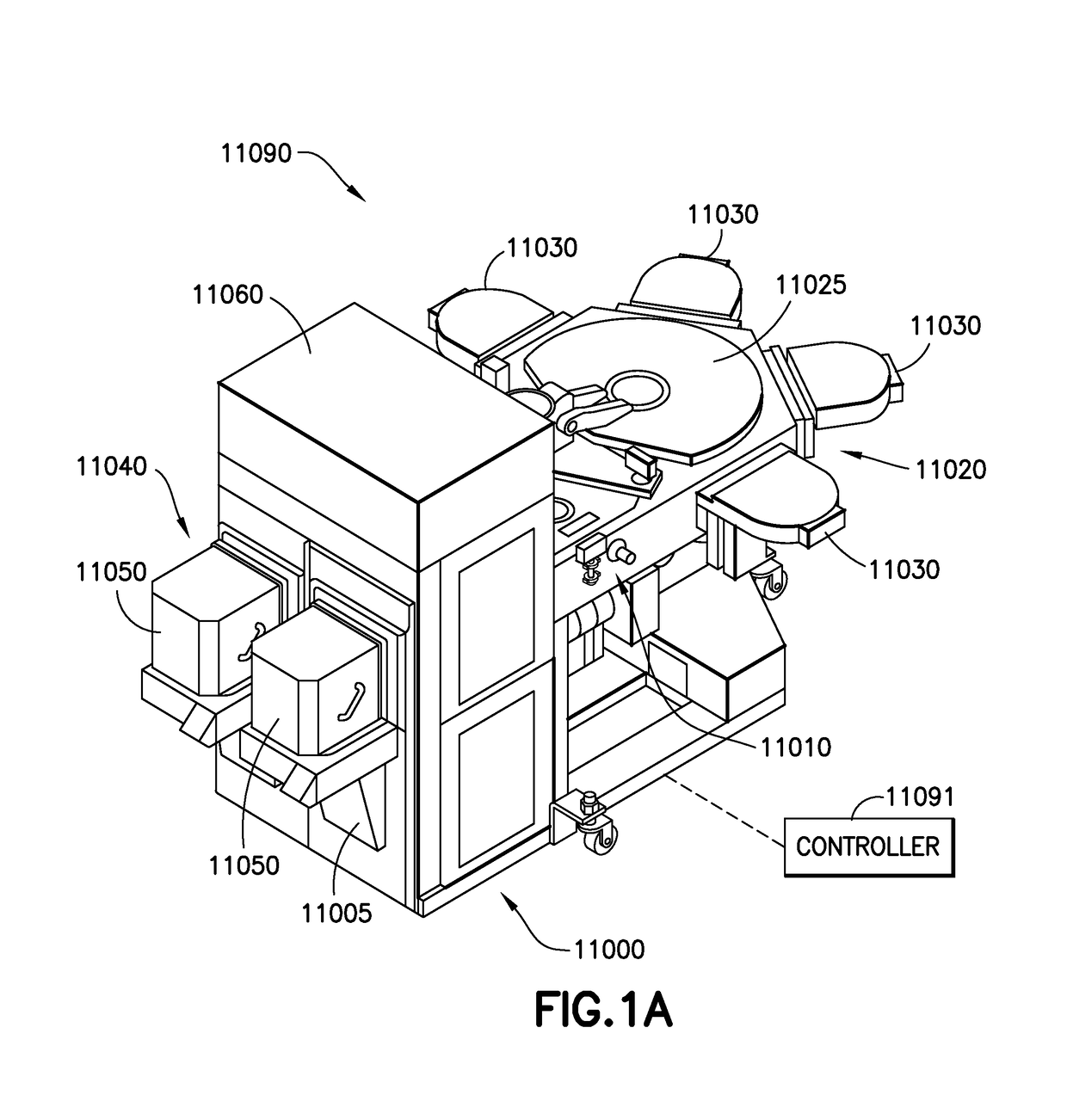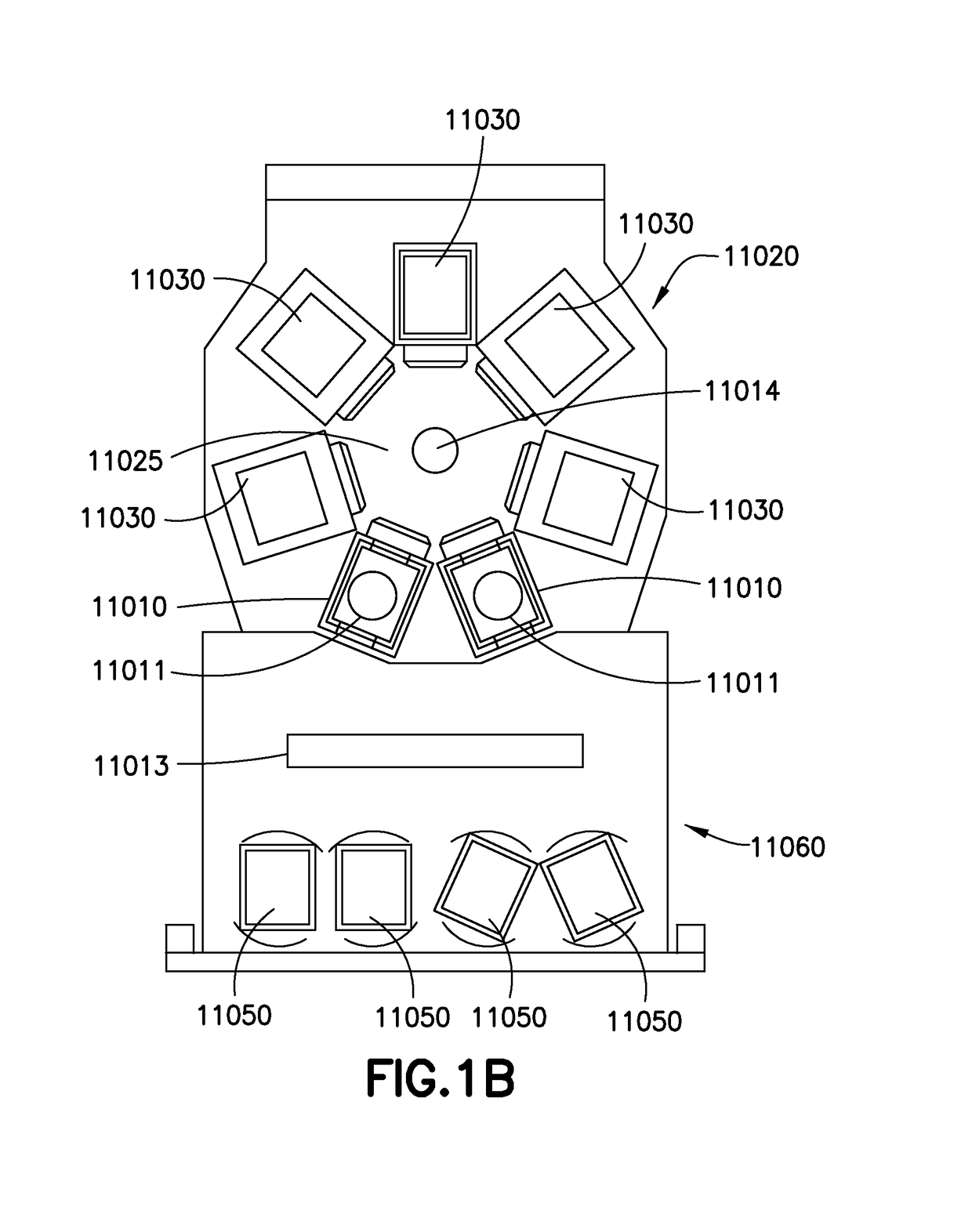Sealed robot drive
a robotic drive and seal technology, applied in the field of sealable robotic drives, can solve the problems of limited size of air gap between the rotor and the stator pole, lack of direct drive technology, and position sensing,
- Summary
- Abstract
- Description
- Claims
- Application Information
AI Technical Summary
Benefits of technology
Problems solved by technology
Method used
Image
Examples
Embodiment Construction
[0039]Referring to FIGS. 1A-1D, there are shown schematic views of substrate processing apparatus or tools incorporating the aspects of the disclosed embodiment as disclosed further herein. Although the aspects of the disclosed embodiment will be described with reference to the drawings, it should be understood that the aspects of the disclosed embodiment can be embodied in many forms. In addition, any suitable size, shape or type of elements or materials could be used.
[0040]Referring to FIGS. 1A and 1B, a processing apparatus, such as for example a semiconductor tool station 11090 is shown in accordance with an aspect of the disclosed embodiment. Although a semiconductor tool is shown in the drawings, the aspects of the disclosed embodiment described herein can be applied to any tool station or application employing robotic manipulators. In this example the tool 11090 is shown as a cluster tool, however the aspects of the disclosed embodiment may be applied to any suitable tool sta...
PUM
 Login to View More
Login to View More Abstract
Description
Claims
Application Information
 Login to View More
Login to View More - R&D
- Intellectual Property
- Life Sciences
- Materials
- Tech Scout
- Unparalleled Data Quality
- Higher Quality Content
- 60% Fewer Hallucinations
Browse by: Latest US Patents, China's latest patents, Technical Efficacy Thesaurus, Application Domain, Technology Topic, Popular Technical Reports.
© 2025 PatSnap. All rights reserved.Legal|Privacy policy|Modern Slavery Act Transparency Statement|Sitemap|About US| Contact US: help@patsnap.com



